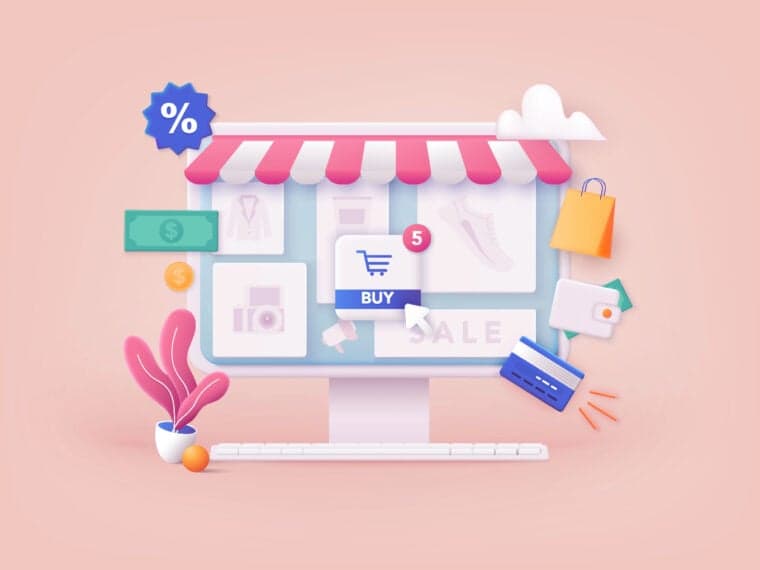
In the early 2000s, the first-mover fallacy could have led to the mistaken belief that e-commerce was dead
While modern D2C ecommerce brands address early challenges, many still end up as suppliers to major ecommerce platforms
Here is why we need to move beyond analysing the big players to assess the industry’s success
There is a growing sentiment that D2C as a sector is slowly dying. Harsh Mariwala, the founder of Marico, told a leading business publication in India that D2C brands will either have to tie up with FMCG companies or sell out if they have to survive and expand into the offline marketplace.
Some of these inhibitions are well founded.
According to the State of the Indian Ecommerce Report, funding amount for ecommerce brands dropped by 64% YoY in 2022, deal count declined by 62% YoY in Q1 of 2023, and the median funding ticket size declined by 69% in Q1 2023. However, there is one small problem with this analysis that is being put forward. It is heavily focussed on the large D2C players and this might not be the most prudent way to analyze a sector.
The First Mover Fallacy
Why we trip up when we take big brands as proxy for the industry?
If you were analysing the ecommerce market in the early 2000s you would have probably come to a conclusion that ecommerce is dead. Why?
In 1999, India’s first ecommerce website Fabmart was launched and a few years later it was shut down. Fabmart, like all the major ecommerce players today, wanted to be the Amazon of India but unfortunately did not succeed.
However, in 2007 Flipkart was launched and shortly after Amazon entered the market and the rest is history. Ecommerce now is a $112 Bn market in India today and is expected to become a $400 Bn market by 2030.
Why were Flipkart and Amazon successful, but Fabmart failed? This is because of what is known as the curse of being the first mover. It is largely seen that in industries where the technology and the market is fast evolving, being the first mover is actually disadvantageous. This is because you enter the market when there is no infrastructure or market.
The first mover is burdened with running their business while also laying the infrastructure and creating a market. The lead time for them is larger which eventually leads them to fail. However, later movers take advantage of this newly created market and infrastructure to make a successful business and enjoy the shorter lead times of success.
In each and every case the bigger established brand tends to fail and the newer smaller brands replace them to pave the way for the industry. This is where most of us trip up. When we take big brands as a proxy for the industry, more often than not, we will come to the conclusion that the industry is failing.
Is D2C Dead?
Or just going through the death of the first mover?
How does what I have laid out above get applied to the D2C sector?
Many can argue that D2C brands are an extension of the ecommerce market where the infrastructure and the market is already created so technically D2C brands are not first movers.
Theoretically this is true, practically there are certain fallacies in this argument. D2C brands, while being an extension of the ecommerce industry, are significantly different from them.
Firstly, D2C brands have a completely different supply chain than that of ecommerce brands. Large ecommerce players have wide networks of suppliers, big inventory management systems, and economies of scale when it comes to logistics. D2C brands, on the other hand, are sometimes single person brands and do not have any of these facilities and do not have even a fraction of the economies of scale.
Secondly, ecommerce brands have, what economists call, large positive network effects. In other words, because so many people are using the large ecommerce platforms, everyone in this network is better off. These types of positive network effects cannot be used by D2C brands.
Lastly, ecommerce platforms have a unique way of reducing information asymmetry to reach price equilibrium relatively quickly. D2C brands, on the other hand, do not have that. Perfect pricing is a matter of trial and error for D2C brands.
These three differences made the D2C market significantly more inefficient, a roadblock the first movers had to solve for. Some of these brands did solve for them in some way but most others just became suppliers to larger ecommerce platforms. Because of this phenomenon many people are coming to the conclusion that D2C is dead.
However, to get a proper analysis we need to look at two metrics. The performance of D2C enablement companies, the ones that build the infrastructure for D2C brands, and the performance of smaller D2C brands. When you analyze these, a different reality surfaces.
In Conclusion
The total funding received by the top D2C enablement platforms up to date is as large as $603 Mn. In fact, this sector has become so robust that one company, Shiprocket, has become a unicorn and another, Fynd, was acquired by Reliance and is now a publicly listed company.
When you look at the small D2C brands, since 2020 the total sales amount from these brands have grown by 36%. In comparison to these numbers, the expected growth for ecommerce as a whole is 19% CAGR by 2030 and 12% CAGR growth by 2030 for total number of online shoppers.
It should be fairly clear now that D2C is far from dead, it is just going through the regular business cycle of growth and fall and as is the case with many other industries, the first movers are seeing a downtrend but the smaller later movers are taking advantage of the infrastructure that the big brands are leaving behind. We are at the cusp of seeing an era of D2C 2.0.































 Ad-lite browsing experience
Ad-lite browsing experience